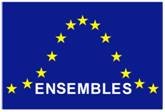|
|
|
Data Format and Transfer specifications
Using Community conventions
We are exploiting the efforts of many who have worked to develop data standards for the climate research community. While a little investment is required to become familiar with the conventions, it is important to realise the benefit: this community activity is working towards a common means of data exchange that will be applicable for many other projects (e.g., AMIP and CMIP)
To ensure that ENSEMBLES coordinated experiments data can be efficiently managed and results rapidly analysed, CGAM will only be able to accept data that meets the following specifications:
Data must be provided in netCDF and compliant with minimum specification by the CF convention
CF Convention:
Dimension Information
Dimension names:
- "time" for the time dimension
- "plev" (data on pressure levels) or "lev" (data on model surfaces)
- "longitude" or "lon" for the longitude dimension
- "latitude" or "lat" fro the latitude dimension
Dimension units:
- time= 'days since 000-1-0' for daily (mean or instantaneous) data
- plev: 'Pa'
- longitude: 'degrees_east'
- latitude: 'degrees_north'
Note: The year (0000), month (1) and day (1) have been arbitrarily chosen. Integrations should begin 0000-01-01, meaning if you follow the recommendation for a 1 year spin-up, the data submitted to CGAM will begin 0001-01-01. For the 6 hourly data, fractional days should be used (e.g., 0001-07-1.25) and the reference time should include 0-hours (e.g., "days since 0000-01-01-00") to anchor the diurnal cycle.
Dimension attributes:
- time: Calendar - 'NoLeapCalendar' or 'Calendar360'
- latitude: latitude_bound
Data on model surfaces:
Grid ordering and orientation:
- time[0,N]
- level[near-surface level, top level]
- latitude[Southernmost latitude, Northernmost latitude]
- longitude[0, eastern most point]
Variables attributes
Global attributes:
- Conventions: 'CF-1.0'
- Source: Model Version as defined by modeler
File structure
Files names should include information about the modelling group, the model used, the resolution, the data type or variable, the experiment and the experiment identifier (a or b) for the different initial conditions. (See coordinated experiments diagnostics)The file name template is as follows:
Group_Model_Resolution_Datatype_Groupofvariables/Singlevariable_Experiment_a/b.nc
Examples of data files:
- INGV_ECHAM4_T30_M2D_R_control_a.nc (monthly mean 2-D fields, radiation variables)
- INGV_ECHAM4_T106_M3D_ta_2CO2_b.nc (monthly mean 3-D field temperature)
- INGV_ECHAM5_T63_DF2_ta_control_b.nc (daily mean field temperature for years 11 to 20)
- INGV_ECHAM5_T106_HF1_ta_control_a.nc (6 hourly instantaneous field temperature for years 11 to 15)
- INGV_ECHAM5_T106_EX_all_control_b.nc (extremes, all variables)
where the .nc extension implies a netCDF file.
The Datatypes are:
- M2D: Monthly mean 2-D fields. The variables under this data type will be archived into the following three files:
- M2D_R (variables to do with radiation)
- M2D_H (variables to do with hydrology)
- M2D_O (others)
- M3D: Monthly mean 3-D fields. Each variable under this data type will be archive on a separate file
- DF: Daily mean fields. Each variable on separate files, apart from daily mean temperature (ta), zonal wind (ua) and meridional wind (va), which will be archived in two files, each containing 10 years worth of data.
- DF1: years 1 to 10
- DF2: years 11 to 20
- HF: 6 Hourly instantaneous fields. Each variable on separate files. (only for the last 10 years of integration). There will be two file for each variable, each containing 5 years worth of data:
- HF1: years 11 to 15
- HF2: years 16 to 20
- EX: Extremes. All variables under the same file. These non-standard variables may not be available for some models
The experiments are: 'Control (a,b)', '2CO2 (a,b)', 'Enh', 'Slab'
|
|

